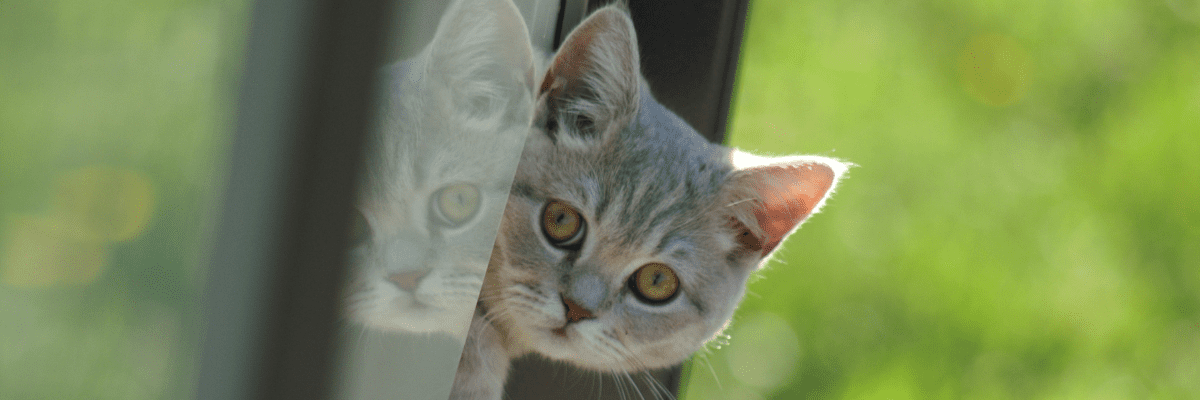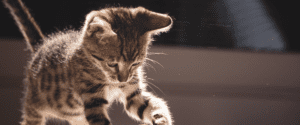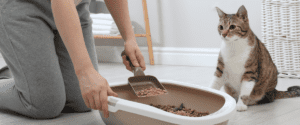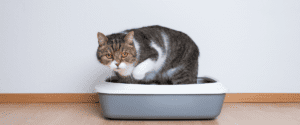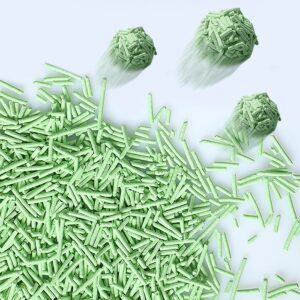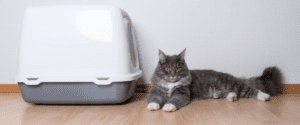Introduction:
As cat owners, we cherish the companionship and joy our feline friends bring into our lives. However, the environmental impact of conventional cat litter disposal has raised concerns about sustainability. Traditional clay-based litters can take centuries to decompose in landfills, contributing to environmental degradation. In this comprehensive guide, we will explore eco-friendly alternatives and sustainable practices for disposing of cat litter.

Choose Eco-Friendly Cat Litter:
The first step towards eco-friendly cat litter disposal is choosing a sustainable litter option. Consider alternatives such as:
a. Biodegradable Cat Litter: Opt for litters made from natural materials like corn, wheat, bamboo, or recycled paper. These litters break down more quickly and reduce the carbon footprint associated with traditional clay litters.
b. Silica Gel Litter: Silica gel is an eco-friendly option that absorbs moisture effectively, controls odors, and is less harmful to the environment compared to traditional clay litters.

c. Pine Pellet Litter: Made from compressed sawdust, pine pellet litter is biodegradable and has a pleasant natural scent. It can be a sustainable choice for both your cat and the environment.
Composting Cat Waste:
Composting cat waste can be an eco-friendly alternative, provided you follow certain guidelines. Keep in mind that cat feces may contain harmful pathogens, so it is essential to separate cat waste from the litter and follow specific composting procedures.
a. Use a Dedicated Compost Bin: Designate a separate compost bin for cat waste to avoid contamination of your regular compost. This bin should be well-ventilated and equipped with a secure lid.
b. Choose Biodegradable Litter: Ensure your cat litter is biodegradable and suitable for composting. Materials like corn, wheat, and recycled paper are excellent choices for compostable cat litter.

c. Hot Composting: Hot composting, which involves maintaining a high temperature in the compost pile, is effective in breaking down pathogens. Regularly turn the compost to accelerate the decomposition process.
Flushable Cat Litter:
Some cat litters are specifically designed to be flushable, allowing for convenient disposal through the toilet. However, it is crucial to use flushable cat litter responsibly and in compliance with local regulations.
a. Check Local Regulations: Before flushing cat litter, research local regulations to ensure that it is allowed. Some areas may have restrictions due to concerns about water pollution and sewer systems.

b. Choose Flushable Litters Wisely: Select cat litters labeled as flushable, and follow the manufacturer’s guidelines for proper usage. These litters are often made from materials that break down in water.
c. Monitor Plumbing Systems: Be cautious about flushing large quantities of cat litter, as it may lead to plumbing issues. Regularly check and maintain your plumbing system to prevent clogs or blockages.
Create DIY Cat Waste Disposal Systems:
For those who enjoy DIY projects, creating a dedicated cat waste disposal system can be both cost-effective and environmentally friendly.
a. Digester System: Construct a digester system using a large container buried in the ground. This system promotes the natural breakdown of cat waste, with the end product serving as fertilizer for non-edible plants.
b. Worm Composting: Vermicomposting involves using composting worms to break down organic waste. Create a small vermicomposting system for cat waste, ensuring proper balance and moisture control.

c. Bokashi Composting: Bokashi bins utilize beneficial microorganisms to ferment organic waste, including cat litter. This anaerobic composting method can be implemented indoors and helps accelerate the decomposition process.
Cat Waste Disposal Services:
In recent years, specialized cat waste disposal services have emerged, offering convenient and eco-friendly solutions for cat owners.
a. Local Collection Services: Some companies provide scheduled collection services for cat waste, ensuring proper disposal and often incorporating environmentally friendly practices.
b. Mail-In Programs: Explore mail-in programs that allow you to send your cat waste to specialized facilities equipped to handle eco-friendly disposal. These services often provide guidelines on packaging and shipping procedures.

c. Collaborate with Municipalities: Advocate for local municipalities to establish cat waste disposal programs that align with sustainability goals. Engage with community initiatives and encourage the implementation of eco-friendly alternatives.
Conclusion:
Caring for our feline companions can coexist harmoniously with environmentally conscious practices. By choosing eco-friendly cat litter, adopting responsible disposal methods, and exploring sustainable alternatives, cat owners can contribute to a healthier planet. As we continue to prioritize sustainability in our daily lives, the well-being of our cats and the environment can go hand in hand, creating a positive impact for generations to come.
